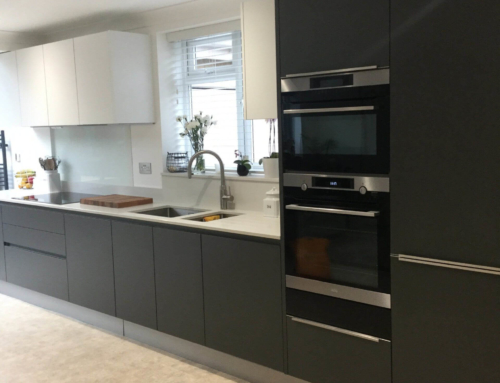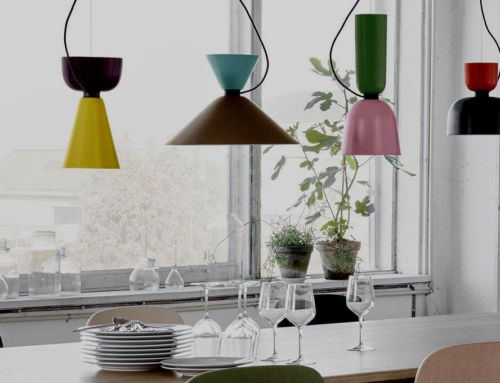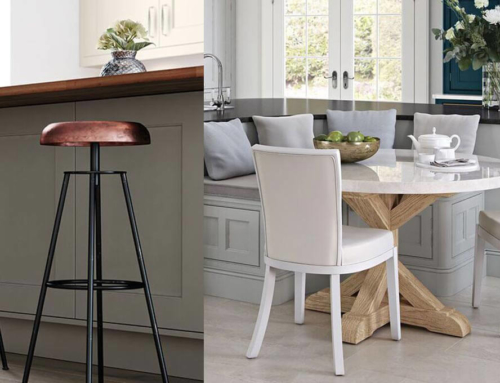A new kitchen, where to start…
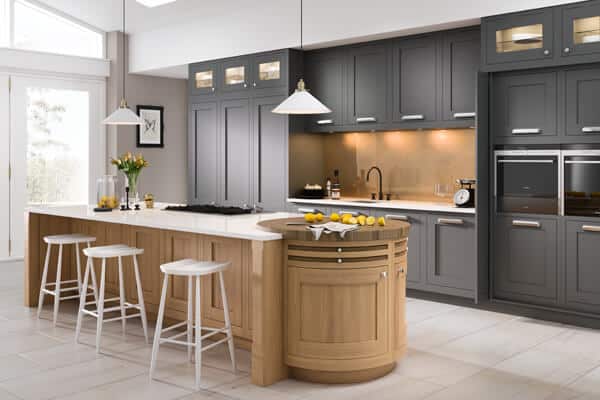
The First Steps to Buying a New Kitchen
Often the first consideration when thinking about a new kitchen project is ‘how much is a new kitchen going to cost?’
Once a budget is established, the second is ‘where or who should I buy it from?’
We find that when a client comes to us, both those considerations have usually been explored, although not necessarily finalised.
Here we outline some of the considerations that may be helpful, regardless of where the kitchen is bought from. The price of a kitchen is based on so many variables, some of which a client can influence and some that they cannot.
What Makes up the Cost of a New Kitchen?
To put an accurate costing together you will need to break down each element and decide if you are going to source each part separately or from one place. Be mindful to understand what is included in every part so that each quotation can be compared like for like.
Generally speaking, the main elements of a kitchen project that you should consider are:
Rip out & Prep – Electrical – Plumbing – Plastering – Decorating – Tiling & Carpentry – Kitchen Furniture – Appliances – Sinks & Taps – Worktops – Installation – Project Management and After Sales Care.
 Many kitchen companies will provide a full service to include the design, supply and installation with all the preparation works included and often with a project-managed service. For the client, this is by far the most stress-free and professionally managed way to get the kitchen project completed and invariably will give the best quality finish in the quickest time. Unsurprisingly, this is not the least expensive solution as companies cannot provide that level of time and skilled support without a cost attached to it. Mistakes can be expensive, with a project-managed installation, all the headaches and considerations, including resolving any unexpected problems and costs, can be managed for you and importantly, after-sales care is included.
Many kitchen companies will provide a full service to include the design, supply and installation with all the preparation works included and often with a project-managed service. For the client, this is by far the most stress-free and professionally managed way to get the kitchen project completed and invariably will give the best quality finish in the quickest time. Unsurprisingly, this is not the least expensive solution as companies cannot provide that level of time and skilled support without a cost attached to it. Mistakes can be expensive, with a project-managed installation, all the headaches and considerations, including resolving any unexpected problems and costs, can be managed for you and importantly, after-sales care is included.
Sometimes, a new kitchen forms part of a larger building project like an extension, and so clients are likely to have a builder running the project already and can choose to have a design and supply-only service from the kitchen company – this works well in terms of coordinating all the works and getting an overall finish, however, it is important to check that your builder has a skilled kitchen installation team.
Sometimes clients may think to reduce costs by removing the old kitchen themselves and using electricians, plumbers and other tradespeople to prepare the room and make the necessary connections. This can often prove to be difficult for many because they would need to liaise with all parties, ensuring the space is ready and that each tradesperson’s time on site is coordinated and secured in the right order, avoiding time delays and hold-ups. Just like any other responsibility, the role of a good project manager is a skilled and experienced one.

The Right People with the Right Skills
It really helps using a team of tradespeople who know each other or have at least worked together before, who can communicate well with each other, and are typically more likely to help each other out and keep everything harmonious and productive on site. Clearly communicated information is the difference between getting it right and making mistakes. Each tradesperson will need to know any number of things – like the positions for the sockets and switches, the appliances loadings, where to position the water and waste or if they can run services behind units without compromising the kitchen design. Invariably the kitchen designer is required to help answer many of these questions so it is important to consider who your kitchen designer is and how much time and information they are committed to or obliged to share with you, and of course, if they have the knowledge to answer your questions.
This brings us back to the skilled kitchen installation team. A quotation from a kitchen design company may use the term ‘dry fit’ installation, which can confuse some people, and is usually less costly because it means the installation of the kitchen furniture and appliances excludes any preparation works, electrical connections, plumbing connections, decorating or any other supporting trades – a dry fit service leaves you to organise all the associated works yourself – so it is important to understand and consider this, particularly when making cost comparisons between different kitchen companies and examining their quotations. Kitchen design companies who offer a dry fit quotation may also recommend a builder for you to liaise with for the project and it’s a good idea to ask if the builder uses a professional kitchen fitter.
 As with all skilled work, specific experience and knowledge is key to the best outcome.
As with all skilled work, specific experience and knowledge is key to the best outcome.
Independent Kitchen Retailer or Big High Street Names?
When you know you are ready to approach someone to discuss your kitchen plans, how do you decide which kitchen retailer to choose? Without a recommendation or previous experience of working with a particular retailer, it can be a bit of a minefield. Do you head for the big names, do you shop locally, check reviews, assume the costs or just take a chance and hope for the best? The latter is unlikely.
Being well-informed and building a relationship with someone you feel comfortable with and who will help you every step of the way, is a good starting point, particularly when investing in something as important as a kitchen.
The kitchen brands you will most likely be aware of are the high street names that occupy large warehouse spaces and advertise on the TV and radio. In the industry, these are often referred to as ‘the sheds’, probably in a slightly derogatory manner by the smaller companies trying to compete with them. A common theme with ‘the sheds’ is the perpetual SALE offers, with 50% off, 75% off etc – what is not advertised is that the original price is often inflated and legally they only need to sell at the higher price for a couple of weeks in the year. These companies rely heavily on their marketing and sales techniques and historically, much less so on the quality of the product and their customer service, particularly after the sale is made. There are also limitations on how be-spoke the design service can be. It’s a bit of a cliché, but you get what you pay for.

This is not to say that the high street brands should be completely avoided as, like all retailers they do have their place in the market. The benefits are that you often see their full range in large showrooms and if you are looking for a simple design and don’t want to spend weeks putting ideas and drawings together then you may find what you are looking for, especially if you want to buy with finance.
Finance is the trump card for high-street brands, and it forms a major part of their marketing strategy. It is always worth researching what 0% finance means and how it is achieved –you can find plenty of sources of information online – it can be a real eye-opener.
Often one of the most exciting and important parts of a new kitchen is what it will look like and how it will work within the home –many of us like to be proud of our spaces and we want to share them with family and friends or enjoy them quietly, by ourselves.
Either way, the quality, as well as the aesthetic, are important so the materials and colour options are crucial to creating an individual and personalised space. No matter how good the product though, you do need a capable designer to put together a properly considered proposal that suits your specific needs and then a capable technical team to ensure they can deliver the design to you.
 If you are simply replacing your kitchen with the same layout and want to keep the costs down then they are quite capable of doing that for you. If however you are looking for something more creative, the independent retailer tends to have a big advantage in this respect, as well as others that we detail further along.
If you are simply replacing your kitchen with the same layout and want to keep the costs down then they are quite capable of doing that for you. If however you are looking for something more creative, the independent retailer tends to have a big advantage in this respect, as well as others that we detail further along.
Why the independent retailer?
Typically, an independent retailer only has one design showroom or perhaps two or three for larger enterprises. They are not tied to any brand which means they can choose a manufacturer that suits their market and they will normally work with two or three brands to offer more variety in style, price point and material options. Being able to offer several brands of kitchen and appliances means you are likely to get a more honest sales experience and your design could be made up of several brands or even have elements outsourced to specialist suppliers to get a bespoke design. With an independent small business you will often work directly with the business owners who are far more invested in their offering and customer service delivery –their company is personal, it’s not ‘just a job’.
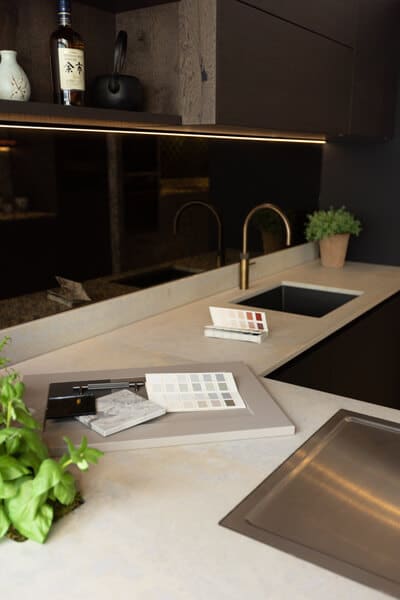 We explored the fully managed installation earlier and this is again an area where the independent retailer has an advantage over the big brands. A small business will usually have a couple of fitting teams and tradespeople they work with continually, so the client can benefit from a more consistently predictable service and usually at a higher standard.
We explored the fully managed installation earlier and this is again an area where the independent retailer has an advantage over the big brands. A small business will usually have a couple of fitting teams and tradespeople they work with continually, so the client can benefit from a more consistently predictable service and usually at a higher standard.
This is not to say that there are never problems, the kitchen industry is fraught with problems both in supply and throughout the installation but an independent retailer will thrive on their reputation, they will carefully hand-pick their suppliers and tradespeople to ensure the best result for their client, and take pride in doing so.
Quality over quantity. Is that another cliché? Maybe, but it is accurate. We’ve given you a little insight into just some of the considerations at the early stages of thinking about a kitchen project –the same applies to fitted bedroom and living spaces furniture and we hope it has answered some of the questions we often get asked by clients.
In our next blog, our business owner, Alex, will offer a balanced insight and share his thoughts on how to go about choosing the right independent retailer, based on his extensive experience within the kitchen and fitted furniture industry – that includes his early start working with the big brand names like MFI and Moben in the 90s, to using familiar high street brands like Howdens and Benchmarx and then developing an independent business that, like other independents, can be selective about using a small number of manufacturers and suppliers to be able to offer quality at affordable prices.


